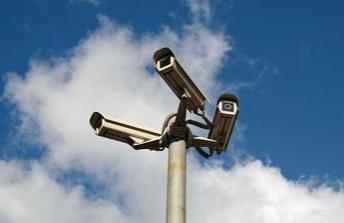 From the 1980s, when analog video surveillance first emerged, to the digital revolution of the past few decades, and now to the rapid rise of network-based video surveillance, the evolution of monitoring technology has been nothing short of remarkable. In just two decades, it has transformed from bulky, limited systems into smart, scalable, and highly efficient solutions. This technological shift has swept across China, giving birth to a wave of network surveillance companies that have quickly grown and flourished. Yet, in this fast-paced environment, only those with real innovation and strong foundations can truly stand out.
Today, as IP technology continues to dominate, it's essential to revisit the journey of video surveillance systems and understand their future potential. To gain deeper insights, we reached out to industry experts. Mr. He Housheng, Chief Technology Officer of a leading tech company, shared his perspective on the technical challenges, market demands, and the bright future of video surveillance. His insights provided a clear picture of where the industry is heading.
The development of video surveillance systems can be divided into three major phases. The first generation was based on analog CCTV systems, which relied heavily on specialized equipment like cameras, cables, and VCRs. While effective at the time, these systems had significant limitations—especially in terms of long-term storage and image clarity.
The second generation introduced digital video recorders (DVRs), combining analog cameras with digital storage. This "analog-digital" approach allowed for better recording and management but still had vulnerabilities, such as data loss due to disk failures or lack of proper backup.
The third generation, however, marks a true transformation: the all-IP video surveillance system. This next-level technology offers simplicity, scalability, and remote accessibility. Cameras can be easily connected via Ethernet, using existing network infrastructure. It’s easy to expand by adding more cameras, and servers can be upgraded without disrupting the entire system. Remote access is seamless, allowing authorized users to monitor from anywhere. Additionally, robust storage solutions like RAID, SCSI, and tape backups ensure data remains secure even if hardware fails.
In today’s market, the focus is on improving and popularizing third-generation systems, making them more user-friendly while maintaining performance and security. The goal is to create a solution that is not only advanced but also accessible to the average user. With continued innovation, video surveillance could soon become as common as computers and smartphones, entering homes and becoming an essential part of daily life. Imagine being able to check your home’s security from anywhere, or receive real-time alerts to improve safety and peace of mind. That future is closer than ever.
From the 1980s, when analog video surveillance first emerged, to the digital revolution of the past few decades, and now to the rapid rise of network-based video surveillance, the evolution of monitoring technology has been nothing short of remarkable. In just two decades, it has transformed from bulky, limited systems into smart, scalable, and highly efficient solutions. This technological shift has swept across China, giving birth to a wave of network surveillance companies that have quickly grown and flourished. Yet, in this fast-paced environment, only those with real innovation and strong foundations can truly stand out.
Today, as IP technology continues to dominate, it's essential to revisit the journey of video surveillance systems and understand their future potential. To gain deeper insights, we reached out to industry experts. Mr. He Housheng, Chief Technology Officer of a leading tech company, shared his perspective on the technical challenges, market demands, and the bright future of video surveillance. His insights provided a clear picture of where the industry is heading.
The development of video surveillance systems can be divided into three major phases. The first generation was based on analog CCTV systems, which relied heavily on specialized equipment like cameras, cables, and VCRs. While effective at the time, these systems had significant limitations—especially in terms of long-term storage and image clarity.
The second generation introduced digital video recorders (DVRs), combining analog cameras with digital storage. This "analog-digital" approach allowed for better recording and management but still had vulnerabilities, such as data loss due to disk failures or lack of proper backup.
The third generation, however, marks a true transformation: the all-IP video surveillance system. This next-level technology offers simplicity, scalability, and remote accessibility. Cameras can be easily connected via Ethernet, using existing network infrastructure. It’s easy to expand by adding more cameras, and servers can be upgraded without disrupting the entire system. Remote access is seamless, allowing authorized users to monitor from anywhere. Additionally, robust storage solutions like RAID, SCSI, and tape backups ensure data remains secure even if hardware fails.
In today’s market, the focus is on improving and popularizing third-generation systems, making them more user-friendly while maintaining performance and security. The goal is to create a solution that is not only advanced but also accessible to the average user. With continued innovation, video surveillance could soon become as common as computers and smartphones, entering homes and becoming an essential part of daily life. Imagine being able to check your home’s security from anywhere, or receive real-time alerts to improve safety and peace of mind. That future is closer than ever.Infrared windows is one of the basic components in optics. It is an optical plate that plays the role of protecting electronic components in optical path. It does not change the optical magnification and only affects the optical path in the optical path.
Ir Window,Basic Components In Optics,Protecting Electronic Components,Ir Sensor Distance
Changchun Champion Optics Co.,Ltd , https://www.champion-optics.com